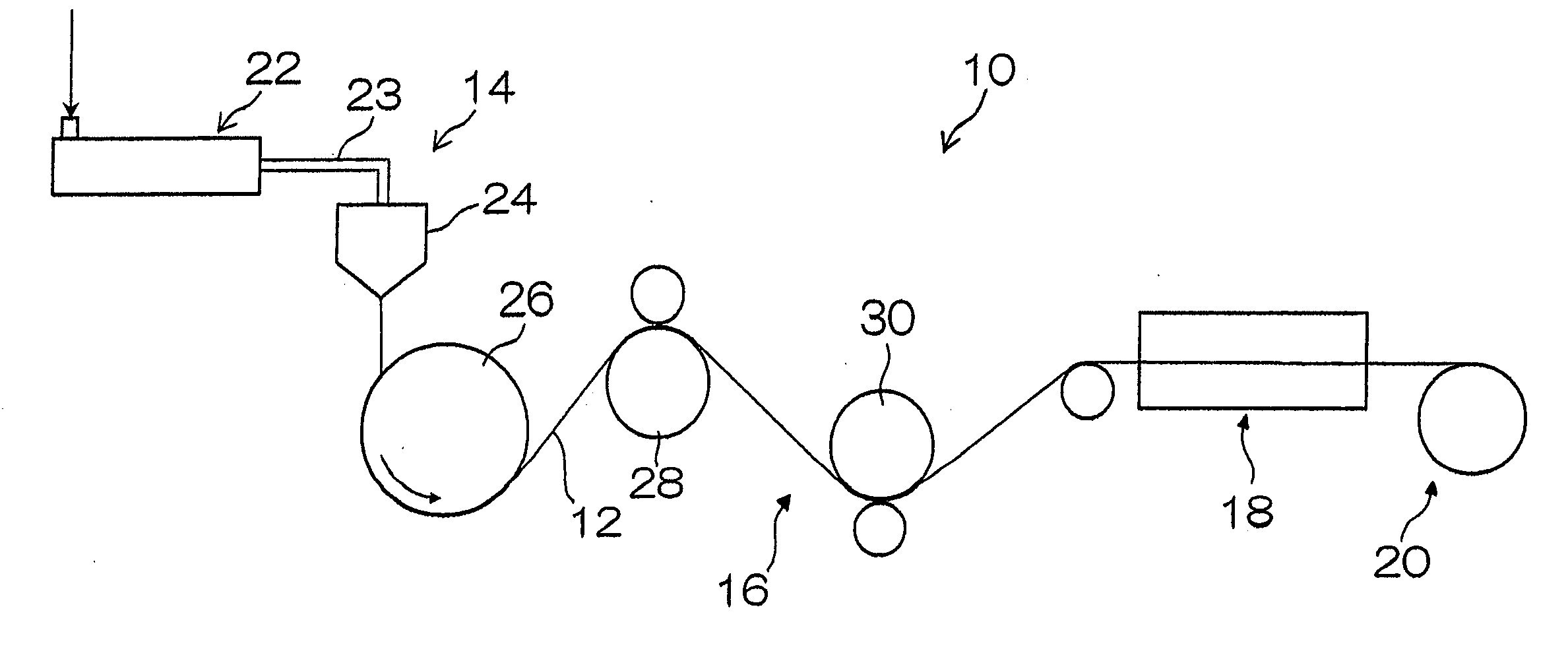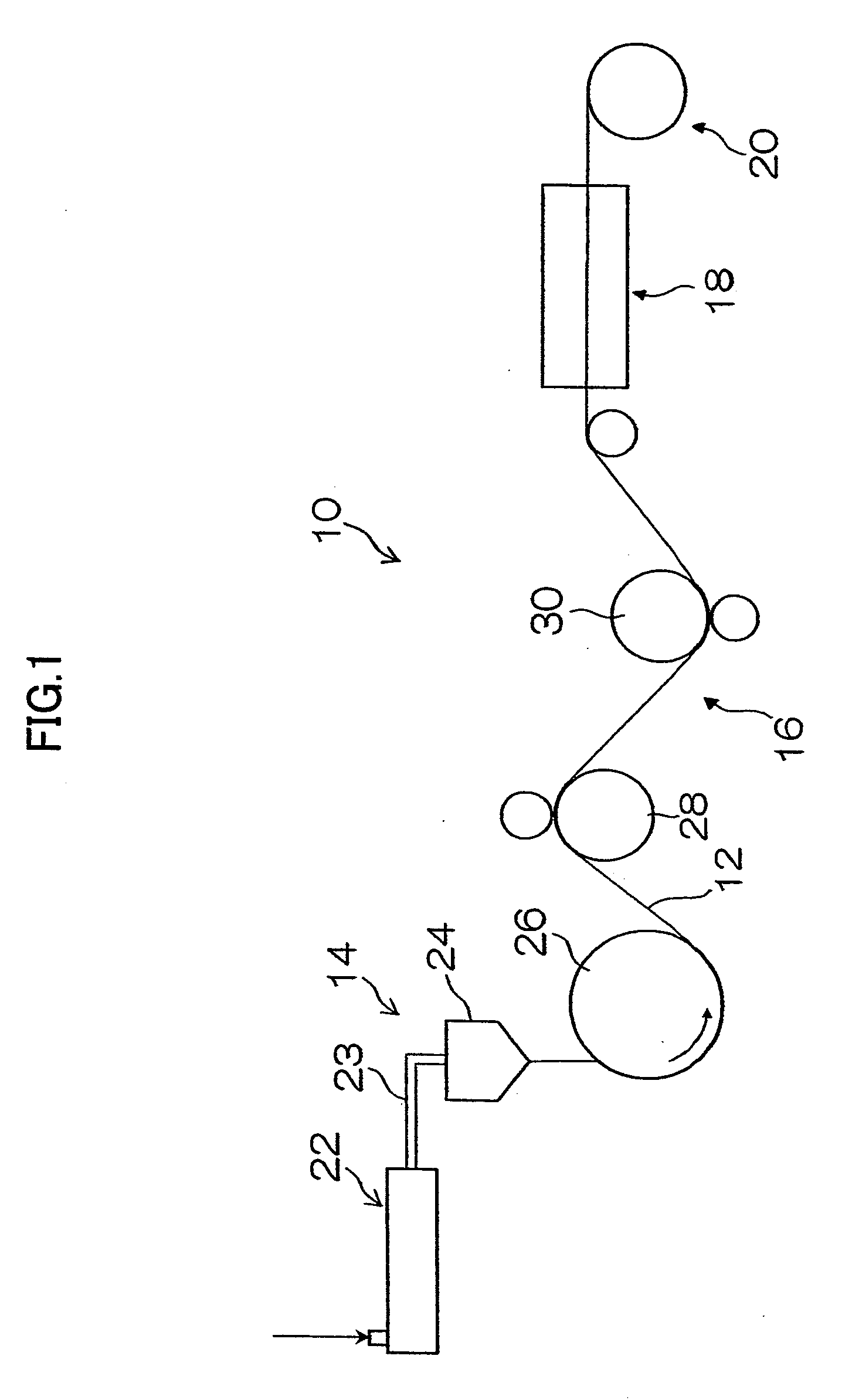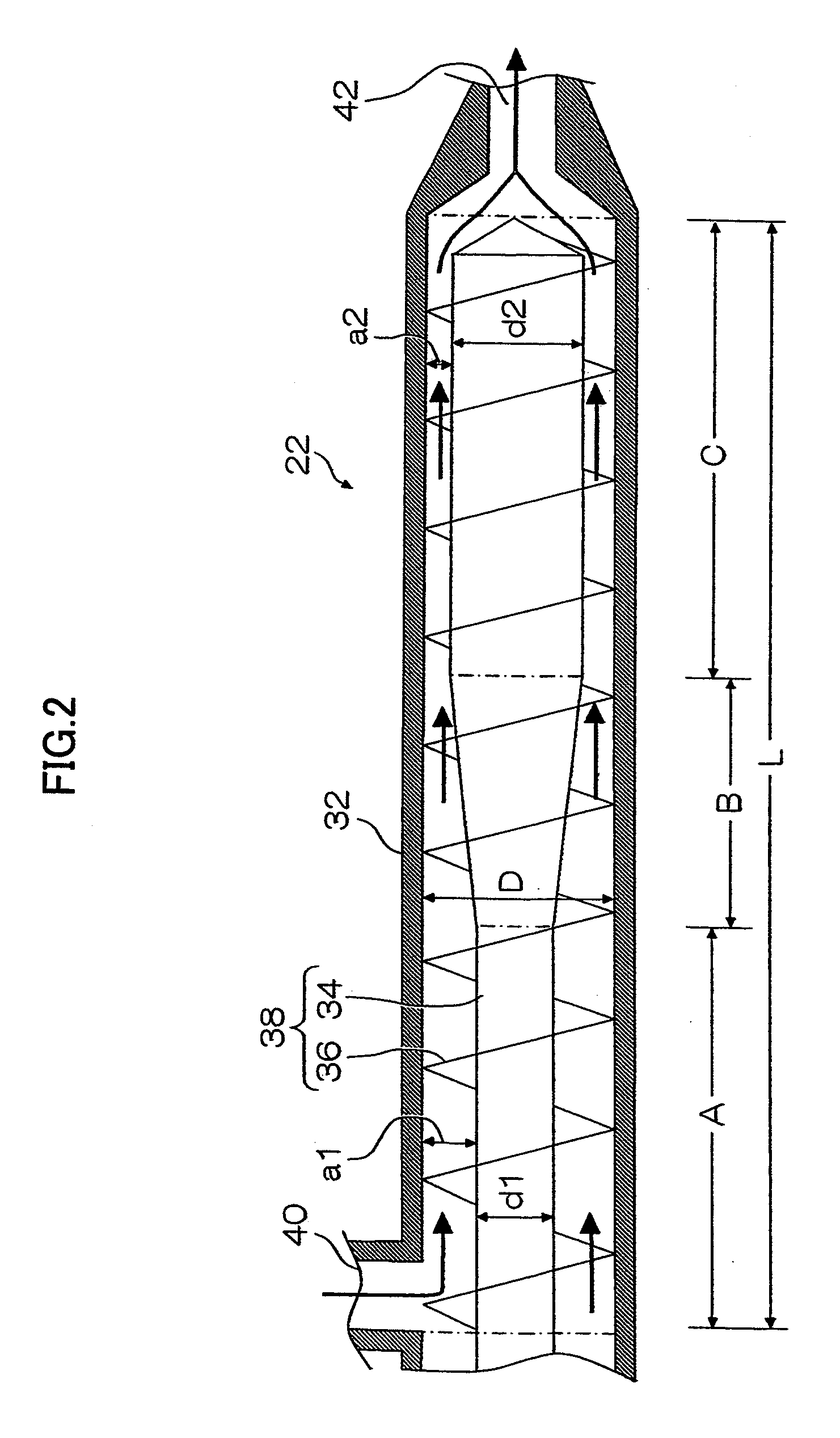Thermoplastic resin film and method for producing the same
a thermoplastic resin and film technology, applied in the field a method for producing the same, can solve the problems of uneven thickness in the machine direction of the produced film, uneven optical properties uneven thickness of thermoplastic resin film, etc., to achieve the effect of reducing uneven thickness and streaks, easy deterioration, and high quality
- Summary
- Abstract
- Description
- Claims
- Application Information
AI Technical Summary
Benefits of technology
Problems solved by technology
Method used
Image
Examples
synthesis example 1
Synthesis of Cellulose Acetate Propionate
[0138]150 g of cellulose (broadleaf pulp) and 75 g of acetic acid were taken into a 5 L separable flask equipped with a reflux unit, as a reactor, and vigorously stirred for 2 hours while heated in an oil bath whose temperature is adjusted to 60° C. The cellulose thus pretreated was swelled and crushed and in the form of fluff. The reactor was then placed in an iced water bath at 2° C. for 30 minutes so that the cellulose was cooled.
[0139]Separately, a mixture of 1545 g of propionic anhydride, as an acylating agent, and 10.5 g of sulfuric acid was prepared, and the mixture was cooled to −30° C. and added, at one time, to the reactor containing the above described pretreated cellulose. After 30 minutes had elapsed, the internal temperature of the reactor was controlled, by increasing the temperature outside the reactor gradually, so that it reached 25° C. two hours after the addition of the acylating agent. The reactor was then cooled in an ic...
synthesis example 2
Synthesis of Cellulose Acetate Butyrate
[0141]100 g of cellulose (broadleaf pulp) and 135 g of acetic acid were taken into a 5 L separable flask equipped with a reflux unit, as a reactor, and allowed to stand for 1 hour while heated in an oil bath whose temperature is adjusted to 60° C. Then the mixture was stirred vigorously for 1 hour while heated in an oil bath whose temperature is adjusted to 60° C. The cellulose thus pretreated was swelled and crushed and in the form of fluff. The reactor was then placed in an iced water bath at 5° C. for 1 hour so that the cellulose was fully cooled.
[0142]Separately, a mixture of 1080 g of butyric anhydride, as an acylating agent, and 10.0 g of sulfuric acid was prepared, and the mixture was cooled to −20° C. and added, at one time, to the reactor containing the above described pretreated cellulose. After 30 minutes had elapsed, the mixture was allowed to react for 5 hours by increasing the temperature outside the reactor to 20° C. The reactor ...
example 1
[0353]In an extruder, the transport efficiency ηF in the feeding section was set to 0.35, the channel diameter in the feeding section was set to 15 mm, a double flight screw was disposed in the compression section and a barrier type mixing section which was a Unimelt® type was disposed in the screw of the metering section. The temperature in the feeding section was set to 180° C. The temperature of the screw in the feeding section was adjusted by circulating oil using an aluminum cast heater. The transport efficiency ηF in the feeding section is determined by the methods described in PRINCIPLES OF POLYMER PROCESSING: Tadmor Gogos and Design Formulas for Plastics Engineers written by Natti S. Rao, translated by Yasushi Oyanagi.
PUM
| Property | Measurement | Unit |
|---|---|---|
| Temperature | aaaaa | aaaaa |
| Temperature | aaaaa | aaaaa |
| Temperature | aaaaa | aaaaa |
Abstract
Description
Claims
Application Information
 Login to View More
Login to View More - R&D
- Intellectual Property
- Life Sciences
- Materials
- Tech Scout
- Unparalleled Data Quality
- Higher Quality Content
- 60% Fewer Hallucinations
Browse by: Latest US Patents, China's latest patents, Technical Efficacy Thesaurus, Application Domain, Technology Topic, Popular Technical Reports.
© 2025 PatSnap. All rights reserved.Legal|Privacy policy|Modern Slavery Act Transparency Statement|Sitemap|About US| Contact US: help@patsnap.com



